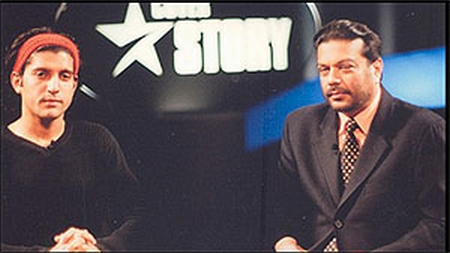
Vir Sanghvi, the versatile and prolific writer, son of the more versatile journalist father, has preferred to ventilate his pent-up comments on the sad development in Indian journalism on his web site. He is welcome to the spreading blogosphere in India. At last, he is able to comprehend the power of this powerful media platform, better known as blogging, new media or web 2.0.

He has stopped writing for his ‘favourite’ pink newspaper MINT as his conscience would not allow him to do so. It is a matter of happiness that he has a conscience. He has reproduced the article “Scams, skysters and Satyam”, meant for his Pursuits column in Lounge, a supplement of the Mint, on his web site. He has alleged that the editor of Mint has refused to carry it because it included criticism of his paper. He has also posted another article on his web site, expressing his hold-no-bar anger, forgetting the cardinal principal of journalism that you should react to a situation but your anger should not be reflected in your write-up or story. To his credit, Sanghvi has carried some adverse comments including one that said:
“Why is everyone so indignant that the critical column wasn’t accepted? Being the Editorial Director of the HT Group (of which Mint, directly or indirectly, is a part), shouldn’t Vir have shared internally, his feedback on goof ups so serious? Are we sure we are talking transparency & ethics here, or is it really about maturity in offering professional feedback to a sister publication? I love Vir’s views, and I love his writing, but I think such misplaced ego & prima donna attitude is silly.”
It was posted by Rajeev. Vir Sanghvi has not dared to reply to this comment. I too made a comment in less than 100 words but the owner of the web site did not fit it to include among the comments though it did not contain any abusive language or carry any pornographic reference but it was critical of Sanghvi’s functioning when he was at the helm of the affairs in (The) Hindustan Times.
Sanghvi has too posted another post under the heading “Owning a TV channel can actually be a problem, rather than an advantage”, in which he has asserted that the clout of the media made no difference. He has given a number of examples including that of Times of India. He writes:
“The most important media house in the country today is Bennett, Coleman and Co., owner of The Times of India, Economic Times etc. But, in the mid to late 1990s, all of The Times of India’s influence could not prevent the needless harassment of Ashok Jain, head of the family that owned Bennett. We know now that at least one of the officials who persecuted Jain was a crook because he was later arrested on corruption charges. But no matter how much the Times protested, Enforcement Directorate officials hounded Jain almost to his death.
“If the Times cannot use its own clout to defend its owner, then what sense does it make to talk of the power of media barons?”
I don’t think that Sanghvi, a known name in the corridors of power and intelligence agencies is aware of actual developments in the case. In fact, on account of this case, H.D. Dev Gowda government fell and was replaced by I.K. Gujaral Government. It is not a mere coincidence that one daughter of one Mr. Judge was married to the son of Mr. Gujaral and another daughter was married to one of the two scions of the Times of India empire. Despite the restrictions, put by the Delhi High Court on the movement of Mr. Ashok Jain, the grand old man of The Times of India, the Gujaral government allowed the senior Jain to move out of country. Are not all such happenings pointers to the clout of media.



